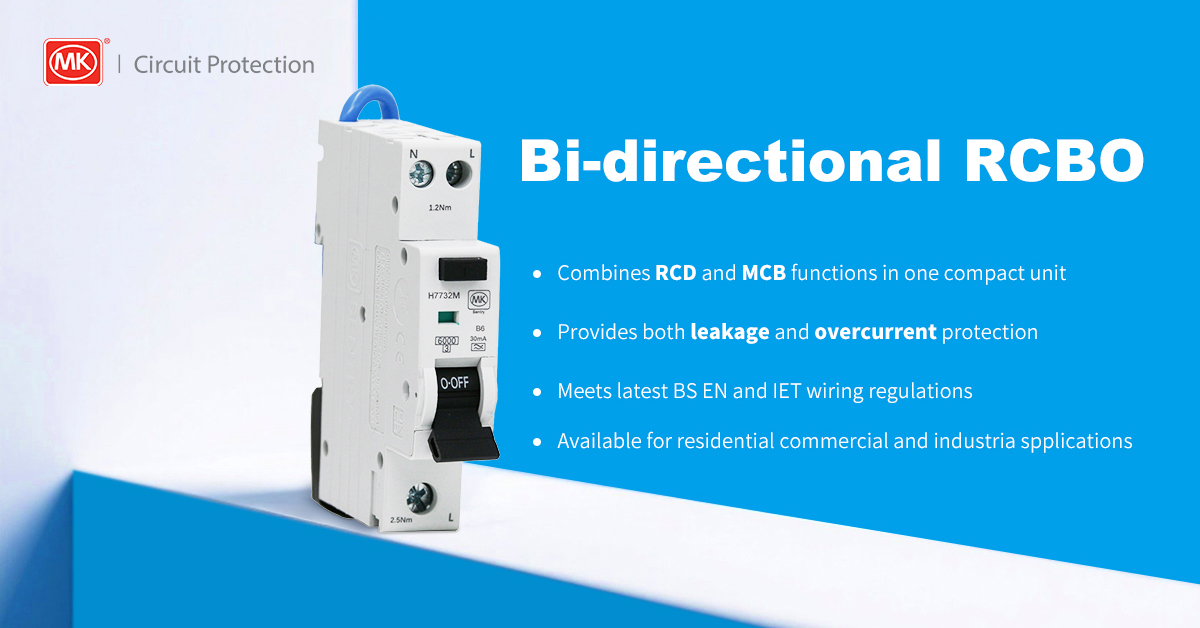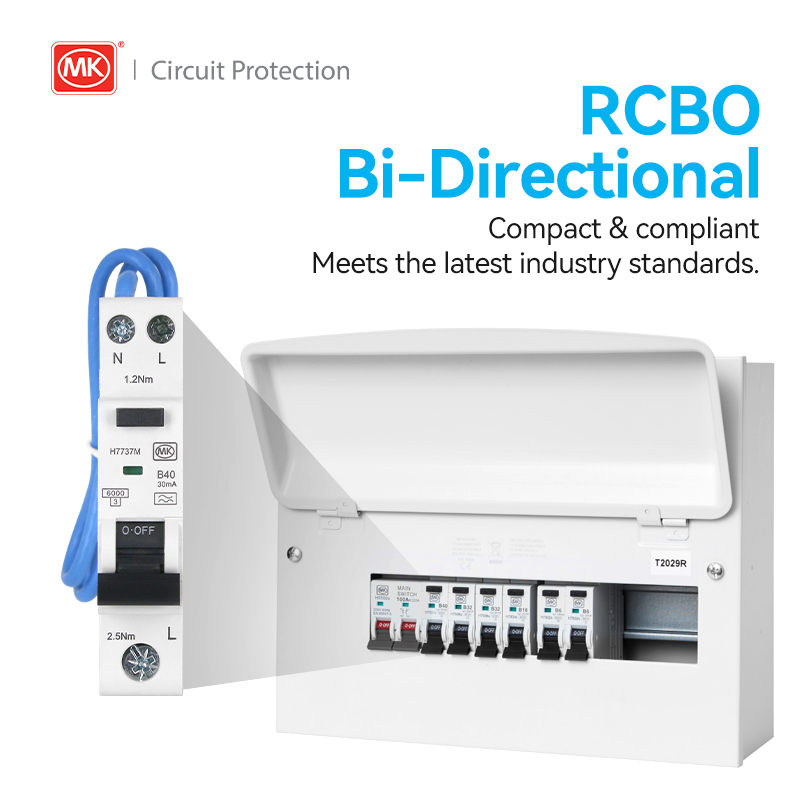
RCBOs and Bi-directional Safety: Are Your Circuits Truly Protected?
With the growing adoption of solar photovoltaic (PV) systems, battery storage units, and electric vehicle (EV) charging infrastructure, electrical installations are no longer purely unidirectional. Power may flow from the grid to the load, or from local generation/storage back to the system—making traditional protection methods increasingly inadequate.
In this new era, selecting the right RCBO is not just about compliance—it’s about resilience.
What Is an RCBO ?
A RCBO (Residual Current Circuit Breaker with Over-current Protection) combines the functionality of RCD(to detect earth leakage currents that may pose an electric shock risk) and MCB (to protect against overload and short-circuit conditions)in one compact unit. It’s widely used in residential, commercial, and light industrial environments to provide individual circuit protection—ensuring both personal safety and equipment reliability.
An RCBO is classified into Bi-directional and non – Bi-directional types based on wiring.
Non – Bi-directional RCBOs typically have clear markings for the line (incoming) and load (outgoing) terminals. Current can only flow from the line terminal to the load terminal, making them suitable for conventional circuits with unidirectional current flow.
Bi-directional RCBOs, however, do not have designated line or load terminals. They allow current to flow in both directions.Bi-directional RCBOs are engineered to:
- * accept power from either terminal (i.e., Line or Load),
- * sustain full functionality and protection regardless of current flow direction, and
- * eliminate the risk of electronic failure due to reverse feeding.
Bi-directional devices:
- * are not marked with Line/Load distinctions,
- * comply with the product standard (BS EN 61009-1) for cases where such markings are unnecessary,
- * and ensure full integrity of leakage detection and disconnection, even in hybrid power setups.
Bi-directional RCBOs Are Especially Important For:
- * PV installations and AC coupled battery systems
- * Prosumer-type installations per BS 7671:2018+A2:2022, Part 8
- * Generator systems (e.g., backup gensets operating in parallel)
- * EV charging infrastructure in grid-interactive configuration
Thanks to IET (Institution of Engineering and Technology) for sharing the above knowledge
MK Circuit Protection RCBOs feature:
- * Bi-directionaloperation
Suitable for use in photovoltaic (PV) systems, battery storage setups, and grid-connected generation systems. They support two-way current flow, making them ideal for the dynamic requirements of modern power networks. - * Type A residual current sensitivity
Essential for detecting DC-influenced leakage currents commonly found in modern electronic equipment and inverters. This meets the safety protection needs of smart grids and renewable energy devices, ensuring reliable system operation. - * 1P+N configuration
Designed in compliance with Regulation 551.7.1 of BS 7671, ensuring both the live and neutral conductors are disconnected. This provides comprehensive circuit isolation and meets strict electrical regulations. - * Resilience to leakage current distortions
Engineered to withstand fluctuating leakage currents in complex grid environments, significantly reducing the risk of nuisance tripping and ensuring continuous power supply. This makes them particularly suitable for upgrading TT systems and decentralized power networks.
Applications:
- * Smart homes: Adaptable to the new power distribution needs of smart devices and renewable energy integration.
- * TT system upgrades: Offering a modern solution with Bi-directionalprotection for traditional earthing systems.
- * Decentralized power networks: Enabling flexible and reliable circuit protection in microgrids and off-grid power systems.
No matter the direction of current flow, MK Circuit Protection’s Bi-directional RCBOs deliver uncompromising protection, safeguarding electrical circuits with exceptional performance for future-facing systems.
Why It’s Time to Upgrade
As electrical technology progresses, standards such as BS 7671:2018+A2:2022 are evolving to keep abreast of innovation. Key sections like 712 (Photovoltaic Systems) and 551 (Generators) make one thing clear: both the direction of current flow and the type of RCD (Residual Current Device) matter significantly.
Future-Ready Protection Starts with the Right RCBO
Not all RCBOs (Residual Current Breakers with Overcurrent protection) are created equal. In an era of distributed generation, energy prosumers, and complex AC/DC interactions, using the wrong type of RCBO can compromise safety and regulatory compliance.
Choose MK Circuit Protection RCBOs and benefit from:
- * Certified Bi-directionalprotection
- * Compliance with the latest BS EN and IET Wiring Regulations
- * Tailored solutions for residential, commercial, and light industrial use
Explore our full RCBO range today to future-proof your electrical installations with dependable, forward-thinking protection.
www.mkcircuitprotection.co.uk/portfolio-category/rcbo



Leave a Reply